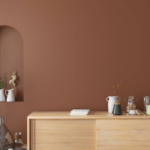Apartment gardening is a rewarding way to engage with nature, even if you don’t have a backyard. It allows you to grow your own food, enhance your living space, and enjoy the therapeutic benefits of plant care. In this article, we will delve into numerous compelling reasons to try apartment gardening, ranging from health improvements to financial savings.
Health Benefits
Engaging in apartment gardening can significantly improve your health. Plants help purify indoor air by absorbing toxins and releasing oxygen, leading to better air quality. Furthermore, gardening is a low-intensity form of physical exercise that can help maintain mental and physical well-being. Here are some key benefits:
- Reduces stress levels
- Improves mood and mental health
- Offers a source of physical activity
Fresh, Organic Produce
Growing your own fruits, vegetables, and herbs ensures that you have a fresh supply of organic produce. This not only reduces your grocery bill but also guarantees that the food you consume is free from harmful pesticides. Apartment gardening allows you to cultivate a variety of personal favorites, such as tomatoes, lettuce, or basil, all within arm’s reach.
Top Plants for Apartment Gardens:
- Tomatoes
- Herbs (basil, parsley, mint)
- Lettuce and leafy greens
- Peppers
- Strawberries
Space Utilization
Apartment gardening teaches you to make the most of your available space. Utilizing vertical gardening techniques, creative arrangements, and compact containers can help you grow a fruitful garden in even the smallest apartments. Window sills, balconies, and even wall mounts can serve as fertile ground for your plants.
Environmental Impact
Apartment gardening is an eco-friendly hobby that contributes to environmental sustainability. By growing your own plants, you reduce the demand for large-scale agricultural practices that often result in deforestation and pollution. Additionally, using recycled materials for pots and eco-friendly composts helps minimize waste.

Therapeutic Benefits
Caring for plants can be a therapeutic and calming activity. The act of tending to plants and watching them grow fosters a sense of responsibility and achievement. This mindfulness can improve overall mental well-being, offering a welcome break from the hustle and bustle of city life. Whether you’re battling anxiety or simply looking for a new hobby, apartment gardening offers a serene escape.
Conclusion
Apartment gardening is a fulfilling and accessible way to bring the joys of nature into your home. From improving health and mood to offering fresh produce and contributing to environmental sustainability, the benefits are numerous. Start small, experiment with different plants, and enjoy the manifold rewards of this green pastime.
FAQs
1. What are the best plants for beginners in apartment gardening?
Beginners should start with low-maintenance plants like herbs (basil, mint), succulents, and leafy greens (lettuce, spinach). These plants are easier to care for and adapt well to indoor environments.
2. How much sunlight do apartment plants need?
Most apartment plants require at least 4-6 hours of sunlight each day. Place them near windows or choose locations with ample natural light. You can also use grow lights if natural sunlight is limited.
3. Can I use any container for apartment gardening?
Yes, you can use a variety of containers like pots, hanging baskets, or even repurposed household items like jars and cans. Just ensure they have proper drainage to prevent waterlogging.
4. How do I avoid pests in my apartment garden?
Keep your plants healthy by ensuring proper watering and sunlight. Natural remedies like neem oil or introducing beneficial insects like ladybugs can help control pests without harmful chemicals.
5. How often should I water my apartment plants?
Watering frequency depends on the plant type and environment. Generally, check the soil moisture level and water when the top inch of soil feels dry. Over-watering can harm most indoor plants, so it’s better to err on the side of under-watering.


